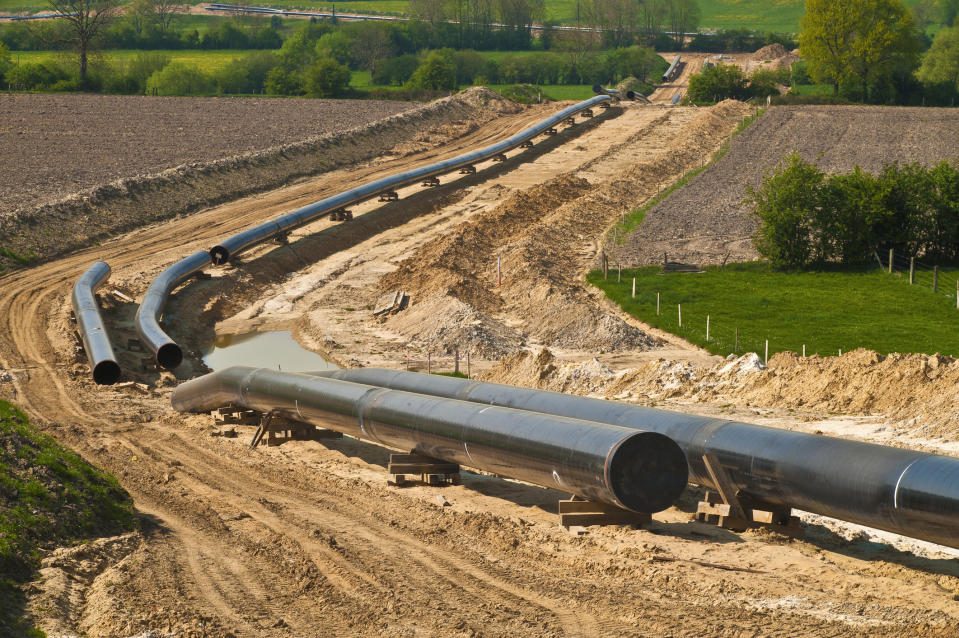Is DCP Midstream a Buy?
Despite the improvement in the oil market over the past year, units of master limited partnership (MLP) DCP Midstream (NYSE: DCP) have shed nearly 25% of their value. That decline pushed the oil and gas midstream company's distribution yield up toward 10%. That high yield certainly catches the eye of income-focused investors.
Here's a look at the bull and bear cases for buying DCP Midstream to collect that big-time payout.

Image source: Getty Images.
The bull case for DCP Midstream
DCP Midstream operates an integrated midstream business with leading positions in many of America's fastest-growing production regions. The company focuses on processing natural gas to extract natural gas liquids (NGLs), making it one of the largest NGL producers in the country. This strategic focus gives the company an advantage over competitors when it comes to securing new expansion projects.
The MLP currently has several expansion projects under construction and in development. The company is competing its O'Conner 2 gas processing plant in the DJ Basin and has another plant, Bighorn, under development. Meanwhile, it has several pipeline projects under construction, including its participation in the Gulf Coast Express natural gas pipeline that should start up later this year. Finally, it has the option to acquire stakes in two expansion projects developed by others, including some NGL processing plants in Texas.
As these projects enter service, they'll help grow DCP Midstream's cash flow. Further, given its strong strategic footprint in key basins, and focus on NGLs, the company should have ample room to continue expanding given that the industry needs to invest more than $50 billion in building new NGL infrastructure alone in the coming years.

Image source: Getty Images.
The bear case for DCP Midstream
One concern with DCP Midstream, however, is that its cash flow tends to be more volatile than other MLPs because it gets a greater percentage of its earnings from commodity-price-sensitive activities. In 2019, fixed-fee contracts will only lock in about 65% of its anticipated cash flow, which is well below the 85%+ comfort level of most MLPs. While the company does use hedging contracts to reduce some of the impacts of commodity price volatility, it has only locked in about 77% of its expected cash flow for 2019.
DCP Midstream's direct exposure to commodity prices can prove beneficial during strong market conditions. In 2019's first quarter, for example, the company generated enough cash to cover its high-yielding distribution by a comfortable 1.45 times thanks to an uptick in oil prices, which boosts the value of NGLs. However, coverage was only 0.90 times during the fourth quarter when oil prices plunged, which pulled 2018's coverage down to a tighter 1.11 times. DCP Midstream is working to reduce its direct exposure to commodity prices by investing in more fee-based expansion projects.
The other concern with DCP Midstream is its balance sheet. While the company had a relatively low 3.6 times debt-to-EBITDA ratio during the first quarter, it has a non-investment-grade credit rating. The company did, however, recently win a rating upgrade that puts it closer to investment grade thanks to its strong execution, lower leverage ratio, and increased fee-based earnings. Though, with its credit still below investment grade, it's more expensive for DCP Midstream to borrow money, which puts it at a disadvantage to its higher-rated peers.
Verdict: DCP Midstream is too risky for income-seeking investors
DCP Midstream offers investors a well above average yield with enticing growth prospects. However, the MLP's outsized exposure to commodity prices and junk-rated credit make it much riskier than its peers. Because of that, income-focused investors might want to consider lower-risk options and put DCP Midstream on their watch list until it increases its fee-based percentage and wins an upgrade to an investment-grade credit rating. Those factors would significantly improve the long-term sustainability of its high-yielding payout.
More From The Motley Fool
Matthew DiLallo has no position in any of the stocks mentioned. The Motley Fool has no position in any of the stocks mentioned. The Motley Fool has a disclosure policy.

